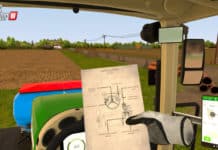Last Update on November 16, 2025
TL;DR
- Microsoft Flight Simulator 2024: full VR support and ongoing 2025 updates; console versions exist, but the sharpest gauges + deep tweaking remain on PC VR.
- Recommended headset: Quest 3 for wireless PCVR (Wi-Fi 6/6E). Alternatives: Pico 4/Ultra, Pimax (clarity), Valve Index (wired).
- Connection: Air Link (free), Virtual Desktop (fine-grained controls, VDXR), or Link cable. Keep the PC on Ethernet and the headset on a dedicated 5 GHz/6E SSID.
- 2025 settings: target stable 36/40/45 FPS (ASW / smoothing), DLSS/FSR = Quality, moderate TLOD/OLOD, VDXR (OpenXR) first.
- Hardware: a yoke/HOTAS + rudder pedals transforms precision and immersion.
Microsoft Flight Simulator 2024 & VR: where things stand
Microsoft Flight Simulator 2024 supports virtual reality and is in the Ranking of the best VR Games. The 2025 updates focus on stability, performance and cockpit readability. Consoles are fine for accessibility, but if you want crisp instruments and granular control, PC + VR headset is the winning combo. New to PCVR? Start with our “set up VR on PC” guide.
Which headset should you pick in 2025?
- Pimax Crystal Super / Pimax Crystal Light: If you have a powerful PC setup, this is the headset to choose—it will let you unlock its full potential, delivering a superior gaming experience and outstanding image clarity.
- Meta Quest 3 — outstanding value, extremely popular for wireless PCVR in MSFS (Wi-Fi 6/6E, strong upscaling, mature ecosystem).
- Pico 4 / 4 Ultra — solid alternative depending on regional availability.
- Valve Index — wired classic (comfort, audio, tracking), less flexible than wireless.
Rule of thumb: for MSFS in PCVR, prioritise lens clarity, comfortable FOV, wear comfort, and network stability over a huge standalone library. Playing on a laptop? See how to optimise a gaming laptop for VR.
Connecting: Air Link, Virtual Desktop, or cable?
- Air Link (Meta) — free, simple, integrated. Fewer advanced toggles.
- Virtual Desktop (VD) — advanced controls (codec, bitrate, smoothing), and VDXR (OpenXR) to bypass SteamVR for many titles; widely loved by simmers.
- Link cable / USB-C — rock-steady latency, depends on cable/USB port; great when your Wi-Fi is limited.
Network golden rules (non-negotiable)
- PC via Ethernet to the router.
- 5 GHz/6E router placed in the playspace.
- Dedicated SSID for the headset (avoid Guest networks).
- Use a clean channel, disable VPN, and limit other devices during flights.
Want every Quest method (wired & wireless) in one place? See all ways to connect SteamVR to Quest 3 or How to Connect Steam VR to Quest 3.
Recommended VR settings for MSFS (2025)

1) Prioritise perceived stability
Your goal is consistent smoothness in the cockpit (readable instruments, gentle transitions). 40 stable FPS with reprojection/ASW beats 55→35 fluctuations. For a clean Windows/SteamVR/OpenXR baseline, follow how to configure VR on PC correctly.
2) OpenXR & rendering
- Runtime: prefer VDXR (OpenXR) when using Virtual Desktop; otherwise use your platform’s OpenXR runtime (Meta/WMR).
- Upscaling: DLSS/FSR on Quality to preserve cockpit sharpness; keep sharpening moderate to avoid halos.
- Headset refresh: 90 Hz (or 120 Hz if your rig can hold it stably).
3) Starting points by GPU (then fine-tune)
- RTX 4070 / RX 7800 XT
- DLSS/FSR Quality
- TLOD ~120, OLOD ~120
- Clouds High | Textures High | AO Low
- RTX 4080 / RX 7900 XTX
- DLSS/FSR Quality
- TLOD ~150, OLOD ~150
- Clouds High/Ultra | Textures High/Ultra | AO Medium
- RTX 4090
- DLSS Quality (or DLAA if you have headroom)
- TLOD 180–220, OLOD 150–200
- Clouds Ultra | Textures Ultra | AO High
Method: change one thing at a time, test 3–5 minutes at the same airport & weather (e.g., EBBR → Live Weather), then adjust TLOD/OLOD in steps of 10.
4) Virtual Desktop tuning (Quest 3)
- Codec: HEVC/H.265 (or AV1 if stable on your rig).
- Bitrate: 120–150 Mb/s on Wi-Fi 6E (80–120 Mb/s on 5 GHz).
- Smoothing: start with Auto; set a fixed value only if you notice micro-stutters.
- FOV / vignette: a light tunneling during taxi/movement can reduce discomfort.
Need the full walkthrough? Keep our Virtual Desktop guide handy.
Hardware that changes everything
- Yoke / HOTAS — a yoke shines in GA aircraft; a HOTAS is fantastic for liners/jets.
- Rudder pedals — finer taxiing and more natural take-offs/landings.
- Seat & ventilation — a stable chair + a fan facing you helps with comfort and “cockpit presence”.
Add-ons & useful profiles
- Airports & mesh — pick optimised sceneries (nice uplift, controlled GPU cost).
- Study-level aircraft — check VR maturity (readable panels, stable performance).
- Overlays & charts — keep only the essentials in-VR to preserve FPS.
Quick troubleshooting
Cockpit looks soft / unreadable gauges
Raise render scale (OpenXR or MSFS), stick to DLSS/FSR Quality, add moderate sharpening.
Network stutter
PC on Ethernet, router in the room, swap Wi-Fi channel, dedicated SSID, limit other devices.
ASW/reprojection artifacts too visible
Try a different FPS target (e.g., 40 → 45), tweak VD Smoothing, lower TLOD in steps.
Black screen / PC not found (wireless)
Allow VD Streamer in firewall/AV, disable VPN, avoid double NAT (or ask your ISP for a public IPv4).
Want a handy desktop while flying (checklists, charts)? See use keyboard & mouse in Virtual Desktop.
FAQ Microsoft Flight Simulator in 2025
Does MSFS (Microsoft Flight Simulator) 2024 support VR?
Yes. VR is supported, with ongoing 2025 updates improving stability and visuals.
Is Quest 3 a good pick for MSFS – Microsoft Flight Simulator?
Yes, hugely popular for wireless PCVR thanks to Wi-Fi 6/6E and great clarity/value.
Air Link or Virtual Desktop?
Air Link is free and simple; Virtual Desktop provides fine controls (bitrate/codec/VDXR) many simmers rely on for stable results.
What FPS should I aim for?
Prioritise stability: 36/40/45 FPS with reprojection/ASW or VD Smoothing yields a fluid, readable cockpit on Microsoft Flight Simulator.
Is a cable better than wireless?
If your Wi-Fi is weak, yes. Otherwise a well-tuned 5 GHz/6E network can feel as comfortable while giving you wireless freedom.
One-page checklist (keep this)
- PC on Ethernet, headset on 5/6/6E Wi-Fi, dedicated SSID, router in the room.
- Aim for stable 36/40/45 FPS (ASW/smoothing).
- DLSS/FSR Quality, moderate TLOD/OLOD; change one setting at a time.
- With Virtual Desktop: HEVC/AV1, 120–150 Mb/s (6E), Smoothing Auto.
- Yoke/HOTAS + pedals for precision; fan for comfort.
Sources
Want to explore more simulation games? Check out our Top Best Simulation Games in VR.











